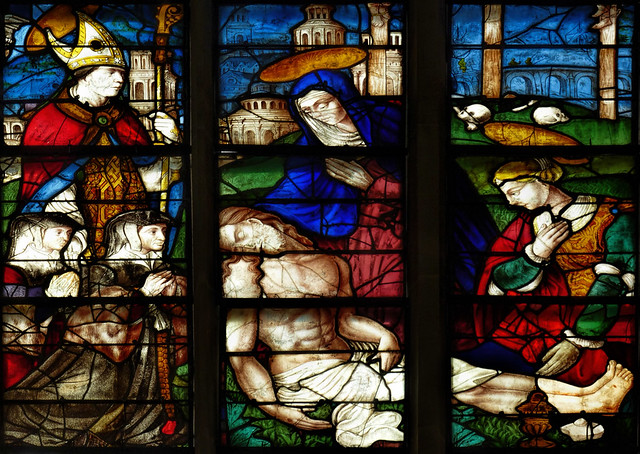Alençon

Originally a 12th-century Romanesque structure, the Basilica of Notre-Dame was modified during the Renaissance, with its porch and organ case from 1537 showcasing the era’s architectural flair. The stained glass windows in the nave, some attributed to the 16th century, mark a transition from medieval to Renaissance styles.
Scenes of the Virgin Mary’s Assumption and Coronation, central to Alençon’s Catholic devotion, are rendered with more naturalistic figures and expressive faces than earlier Gothic designs. The Renaissance glaziers in Alençon adopted innovations like enamel painting, allowing for finer details and a broader color palette (rich blues, reds, and emerging yellows via silver staining). Lead strips were used more delicately to outline figures, creating a sense of depth and perspective. The windows reflect the Renaissance interest in classical symmetry and proportion, with some panels incorporating decorative elements like scrolls or pilasters, though retaining Gothic pointed arches.
